

|
Pilgrimage on the Way of Saint James to Santiago de Compostela |
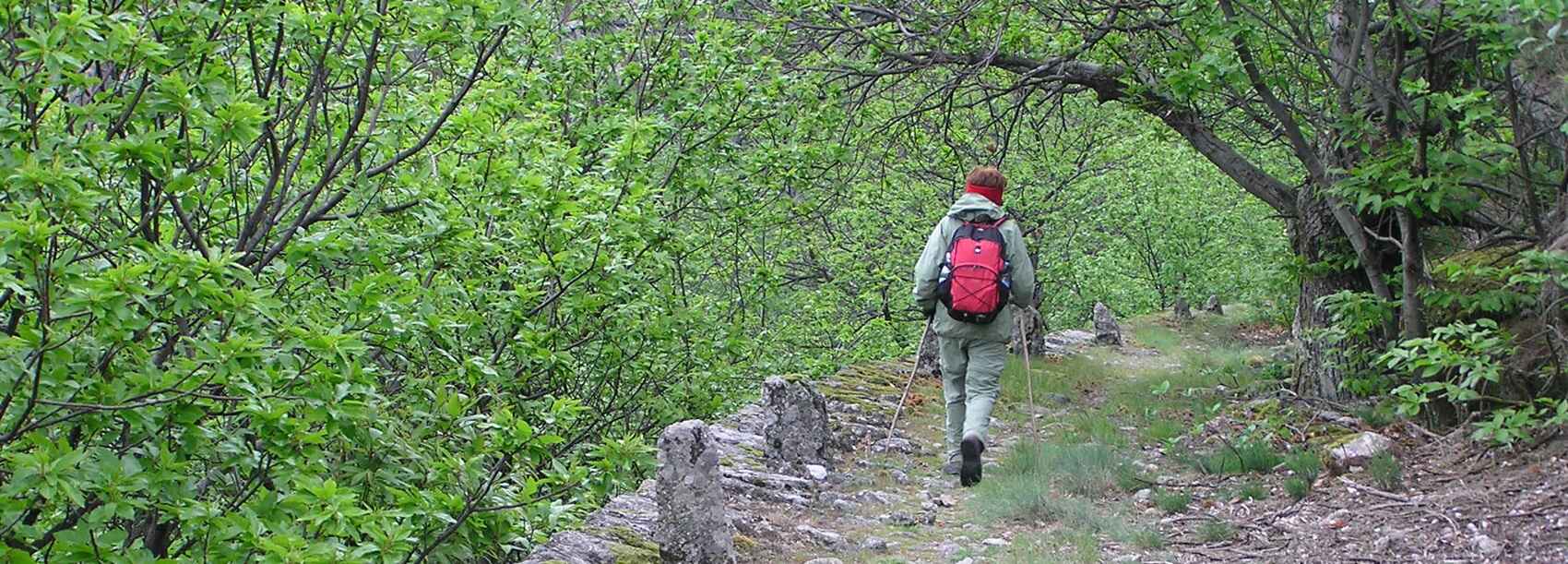
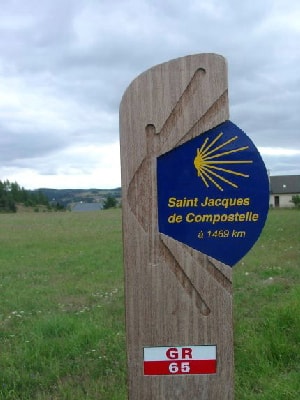
![]() Ultreïa! sang the pilgrims of old on the roads to Saint James, supporting the fervor of their journey with this cry of expectation and hope. After an interruption of several centuries, it is once again echoed by modern pilgrims who, following in the footsteps of their medieval predecessors, have resumed the journey to Compostela, animated by the same faith.
Ultreïa! sang the pilgrims of old on the roads to Saint James, supporting the fervor of their journey with this cry of expectation and hope. After an interruption of several centuries, it is once again echoed by modern pilgrims who, following in the footsteps of their medieval predecessors, have resumed the journey to Compostela, animated by the same faith.
What motivations drove the man of the Middle Ages to leave his environment: village, country, to embark on the adventurous paths of pilgrimage? There must have been the simple curiosity that drives a person to go elsewhere to know things. There must have been the desire to escape from the environment in which one usually lives and which eventually becomes tedious, the desire to break with habits. More profoundly, the desire to meditate, to pray, and to find God through an ascetic life tied to walking, to a wandering life, to sanctify oneself and thus be reborn as the "new man." The pilgrimage was seen as the fulfillment of a personal vow, a thanksgiving for healing, deliverance, or help. It was also a way to enhance one’s status and become, upon returning to one's village, a subject of admiration among others. These various motivations often intertwined and irresistibly urged the pilgrim to set off.
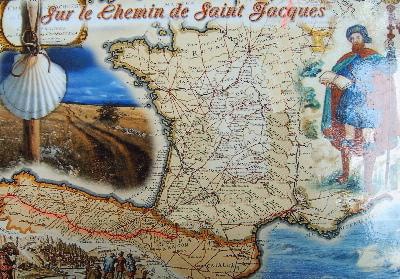 Saint James, whose tomb is venerated in Compostela, is one of the twelve Apostles, the first companions of Jesus. Brother of the evangelist Saint John, he was a fisherman on the Sea of Galilee with Saint Peter when Jesus called them to follow him. He was beheaded in 44 in Jerusalem, on the orders of King Herod Agrippa. Little is known about the historical figure, also called James the Greater (to distinguish him from James the Lesser, another apostle considered the first bishop of Jerusalem). Legend has it that he preached the Christian faith in Spain and that his remains were mysteriously transported there after his martyrdom, on a ship that crossed the Strait of Gibraltar to land in northwest Spain in Galicia. A cart drawn by two oxen carried the body inland, where he was buried. In the 9th century, a miraculous star was said to signal the field where the Apostle lay and where the first sanctuary of Compostela was erected. Excavations conducted between 1953 and 1959 under the current cathedral revealed remains of a Roman settlement and a cemetery.
Saint James, whose tomb is venerated in Compostela, is one of the twelve Apostles, the first companions of Jesus. Brother of the evangelist Saint John, he was a fisherman on the Sea of Galilee with Saint Peter when Jesus called them to follow him. He was beheaded in 44 in Jerusalem, on the orders of King Herod Agrippa. Little is known about the historical figure, also called James the Greater (to distinguish him from James the Lesser, another apostle considered the first bishop of Jerusalem). Legend has it that he preached the Christian faith in Spain and that his remains were mysteriously transported there after his martyrdom, on a ship that crossed the Strait of Gibraltar to land in northwest Spain in Galicia. A cart drawn by two oxen carried the body inland, where he was buried. In the 9th century, a miraculous star was said to signal the field where the Apostle lay and where the first sanctuary of Compostela was erected. Excavations conducted between 1953 and 1959 under the current cathedral revealed remains of a Roman settlement and a cemetery.
This approach is universal: it can be found throughout human history, in all religions, on all continents. Becoming a stranger, leaving one’s familiar world, losing social status and hierarchical references, the pilgrim becomes aware of himself, of his limits, and sometimes learns to overcome them. Every pilgrimage evokes our journey on earth towards heaven. It reminds us that on earth, we are just passing through, on our way to our definitive home, in active anticipation of meeting and eternal communion with God.
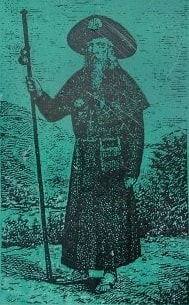 Some treasures of a pilgrimage on foot:
Some treasures of a pilgrimage on foot:
 On the Way to Saint James...
On the Way to Saint James...
Who is Saint James? James, one of the twelve apostles of Jesus, is the elder brother of the apostle and evangelist John. Son of Zebedee, he was a fisherman with his father on the Sea of Galilee; Jesus nicknamed him and his brother Boanerges (Sons of Thunder). This nickname indicates an impetuous, ardent, determined, and bold character. Along with Peter and John, he is one of the "intimates of Jesus," privileged witnesses of important events in His life: the resurrection of Jairus' daughter, the Transfiguration, and the agony of Jesus. Tradition considers him the evangelizer of Spain.
According to the Acts of the Apostles, he was martyred in Jerusalem (between 41 and 44), beheaded on the orders of King Herod. While Stephen is the first Christian martyr (around the year 35), James was the first apostle to shed his blood for the Lord Jesus. Fleeing persecution, disciples of Jesus reportedly brought his body back by boat to the places he himself had evangelized. His tomb was discovered in Compostela in the 9th century. By the year 1000, Compostela had become, along with Rome, the principal pilgrimage in the West.
Saint James left everything to follow Jesus and gave his life to Him. This pilgrimage invites us to embrace his testimony, to open ourselves to the one for whom he was beheaded. Being a pilgrim of Saint James is to seek to be like him, an intimate of Jesus, a true disciple; living one's faith with boldness, generosity, fervor, and fidelity. In the example of this "Son of Thunder."
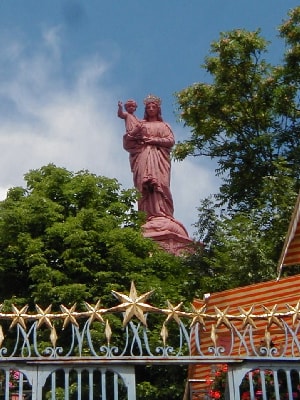 The bishop of Compostela also encourages us to engage in dialogue along the way: “The Way of Saint James should be a 'road of brotherhood,' as a space, time, and spiritual environment where Catholics give reason for their faith and hope. They promote ecumenical dialogue with their separated brethren, with members of other religions, and also with those who do not experience the joy of faith and who, in a spirit of inquiry, ask questions along the way.” (Pastoral letter for the Holy Compostellan Year 1999)
The bishop of Compostela also encourages us to engage in dialogue along the way: “The Way of Saint James should be a 'road of brotherhood,' as a space, time, and spiritual environment where Catholics give reason for their faith and hope. They promote ecumenical dialogue with their separated brethren, with members of other religions, and also with those who do not experience the joy of faith and who, in a spirit of inquiry, ask questions along the way.” (Pastoral letter for the Holy Compostellan Year 1999)
 Starting from Puy or passing through Puy
Starting from Puy or passing through Puy
The first known historical pilgrim was Godescale, bishop of Puy from 927 to 962. In 951, he went "in haste to the borders of Galicia to humbly implore God's mercy and the intercession (help, prayer) of the apostle James." Upon returning, undoubtedly enthusiastic like today's pilgrims, he had a chapel built at the top of the rock of Aiguilhe in 962 and invited pilgrims to set off from Puy, entrusting their journey to the prayer of Mary and the archangel Saint Michael.
Puy-en-Velay is one of the oldest Marian sanctuaries in Europe. Since the 5th century, countless pilgrims have come here to entrust their concerns to the prayer of Mary, the Mother of God. To come to us, God chose to pass through a young virgin: Mary.
The statue of Our Lady of Puy reminds us of this.
We can let ourselves be guided by her, entrusting ourselves to her prayer. "Woman," as Jesus calls her, recalling the word from Genesis, Mary walks beside us, humble and faithful servant. Virgin, she is entirely turned towards God. She leads us to her Son Jesus. As a Mother, she watches over our growth as children of God, just as she did for Jesus.
If the sun is shining, the color of your faces will resemble that of Jesus and Mary! Like us, the Son of God walked hard under the sun of our earth, with His mother by His side. He gave His life for us, accepting to die on a cross. At the invitation of Mary, His mother, let us welcome His love, the source of light and peace. “The Mother of God will help you, throughout your pilgrimage, to better know and love the Church that needs you so much! She will show you the path of the greatest love for each; in a word, how to be a saint in our time.” Bishop Brincard, Bishop of Puy-en-Velay. The sanctuary of Saint Michael of Aiguilhe also reminds us that we can count on the presence and help of angels, our invisible companions. They watch over us, "lest our feet strike a stone" (Mt. 4:6). May this pilgrimage renew you. As a pilgrim said: “You don’t take the Way of Saint James; it takes you!” May Saint James, Our Lady, and Saint Michael intercede for you before the throne of the Most High!
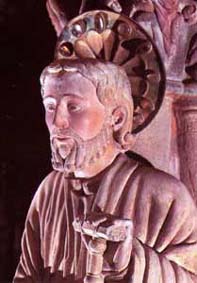 Saint James
Saint James
The Way from Puy (via Podiensis). Stretching 1600 km, it is highly regarded because:
 Saint James, elder brother of Saint John, is one of the twelve apostles, nicknamed "the Greater." Christ asked the apostles to go evangelize "to the ends of the Earth," and according to tradition, Saint James was in charge of Hispania, at the western edge of the known world at that time. Having failed in his preaching, tradition tells us that the Virgin Mary visited him in Zaragoza, appearing on a column. The Basilica of "El Pilar" preserves this memory. Upon returning to Jerusalem, Saint James was beheaded in 44, the first apostle to become a martyr. Tradition also recounts how his disciples placed him in a boat, crossing the entire Mediterranean, passing the "Pillars of Hercules" (modern Gibraltar) to land in a ria of Galicia, the ancient Iria Flavia, which would later be called "Padron."
Saint James, elder brother of Saint John, is one of the twelve apostles, nicknamed "the Greater." Christ asked the apostles to go evangelize "to the ends of the Earth," and according to tradition, Saint James was in charge of Hispania, at the western edge of the known world at that time. Having failed in his preaching, tradition tells us that the Virgin Mary visited him in Zaragoza, appearing on a column. The Basilica of "El Pilar" preserves this memory. Upon returning to Jerusalem, Saint James was beheaded in 44, the first apostle to become a martyr. Tradition also recounts how his disciples placed him in a boat, crossing the entire Mediterranean, passing the "Pillars of Hercules" (modern Gibraltar) to land in a ria of Galicia, the ancient Iria Flavia, which would later be called "Padron."
For eight centuries, history loses track of Saint James, but some notable figures like Saint Jerome (+419), Saint Isidore of Seville (+636), and Beatus of Liébana (+800) referenced an ancient tradition, presenting Saint James as the evangelizer and Patron of Spain. In 711, the Moors invaded Spain. The entire peninsula fell under their yoke, except for the extreme Northwest. It is there that, starting in 718, under the leadership of the Visigoth chief Pelayo, the "Reconquista" of Catholic Spain against the Moors began, culminating in the victory at Covadonga in Asturias. It would not cease until 1492, with the capture of Granada by the "Catholic Monarchs." Around 814, in Galicia, the hermit "Pelayo," attracted by lights, discovered a tomb recognized as that of Saint James by the Bishop of Iria Flavia, Theodomiro. The place would be called "Compostella," from the Latin "compostila" (small cemetery or field of the star).
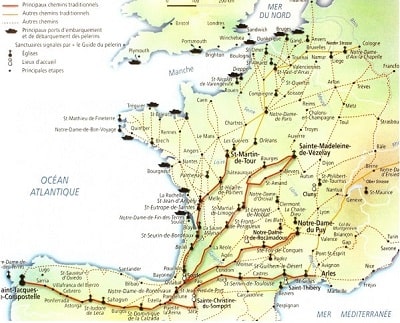 From then on, the pilgrimage organized, with the construction of the first church on the tomb, and the spreading of the news in the known world of the time. Pilgrims began to arrive. In 950, at the turn of the two millennia, Godescalc (+961), bishop of Puy-en-Velay and a fervent devotee of the Virgin Mary, became the first officially recorded pilgrim. He ordered, while passing through Albelda near Logroño, a copy of the book of Saint Ildefonso of Toledo (667), "in praise of the virginity of Holy Mary, always Virgin," which he took on his return, copied and prefaced by the monk Gomez Sanz.
From then on, the pilgrimage organized, with the construction of the first church on the tomb, and the spreading of the news in the known world of the time. Pilgrims began to arrive. In 950, at the turn of the two millennia, Godescalc (+961), bishop of Puy-en-Velay and a fervent devotee of the Virgin Mary, became the first officially recorded pilgrim. He ordered, while passing through Albelda near Logroño, a copy of the book of Saint Ildefonso of Toledo (667), "in praise of the virginity of Holy Mary, always Virgin," which he took on his return, copied and prefaced by the monk Gomez Sanz.
The reconquest continued. As the Christian troops advanced, kings and bishops organized, from the 11th century onwards, the "Camino Francés" for the passage and welcome of pilgrims, building roads, bridges, and hospitals first entrusted to the monks of Cluny, and then to various hospital orders. They founded new "frank" towns, inviting everyone to come and settle there. At the same time, popular piety revered Mary under various titles along the "way," along the axis Montserrat-Zaragoza-Compostela. King Alfonso X the Wise (1284), a great scholar, left us the treasure of the "Cantigas de Santa Maria," still sung today.
 Saint Austinde, Archbishop of Auch (1042-1068), founded around 1055 the "Sauveterre" of Nogaro, with a hospital that also welcomed pilgrims coming from Puy. In July 1060, he inaugurated the church where a fresco from that time was recently discovered, depicting a couple of pilgrims of Saint James: the oldest known representation of Jacquets. In 1063, he presided over the first Council of Jaca, a new town created by King Sanche Ramirez of Aragon (1063), on the way coming from Arles. At the beginning of the 12th century, the great bishop Gelmirez began the construction of the current cathedral in Compostela. Pilgrims flocked from all over Europe, taking existing routes, often ancient Roman roads, but where their welcome would be organized over time, presenting an unprecedented network of "paths" leading to Compostela. They were to travel in organized groups from the high places of ancient and traditional pilgrimage where they would gather: Arles, Le Puy, Vézelay, Tours, then Paris. It is generally agreed that, over the centuries, the mixing of the diverse populations going to and from Compostela has significantly contributed to the building of Europe.
Saint Austinde, Archbishop of Auch (1042-1068), founded around 1055 the "Sauveterre" of Nogaro, with a hospital that also welcomed pilgrims coming from Puy. In July 1060, he inaugurated the church where a fresco from that time was recently discovered, depicting a couple of pilgrims of Saint James: the oldest known representation of Jacquets. In 1063, he presided over the first Council of Jaca, a new town created by King Sanche Ramirez of Aragon (1063), on the way coming from Arles. At the beginning of the 12th century, the great bishop Gelmirez began the construction of the current cathedral in Compostela. Pilgrims flocked from all over Europe, taking existing routes, often ancient Roman roads, but where their welcome would be organized over time, presenting an unprecedented network of "paths" leading to Compostela. They were to travel in organized groups from the high places of ancient and traditional pilgrimage where they would gather: Arles, Le Puy, Vézelay, Tours, then Paris. It is generally agreed that, over the centuries, the mixing of the diverse populations going to and from Compostela has significantly contributed to the building of Europe.
In 1492, the Catholic Monarchs Isabella of Castile and Ferdinand of Aragon put an end to the Reconquista with the capture of Granada on January 2. A period of great richness in heritage then opened in Spain, supported by the Kings: hospitals and churches were restored or built, and pilgrimage was encouraged. However, starting in the following century, the rise of Protestantism, the wars of religion, various "anti-shell" laws in Spain and France, as well as the influence of the "Enlightenment" in the 18th century, would gradually dry up the flow of pilgrims. In 1789, the French Revolution, which abolished all convents, would nearly halt the passage, although it continued in Spain, where Saint James remained venerated as the Patron Saint.
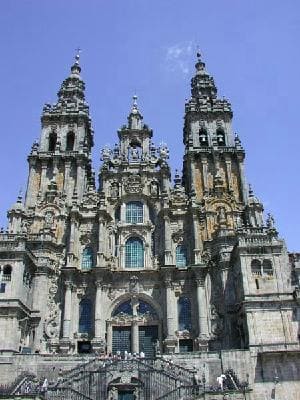 The archaeological research of the 19th and 20th centuries confirms the presence, in the basements of the cathedral of Santiago de Compostela, of the remains of Saint James, his two disciples Theodore and Athanasius, and the bishop Theodomire. The discovery in 1868, at the "Imperial Library" in Paris, of the book of Saint Ildefonso, brought back to Puy by Godescalc in 951, provides proof of his pilgrimage and places it "at the crossroads" of this new millennium. Godescalc presides over the revival of the pilgrimage, and this time again with the Virgin Mary, since following Saint Ildefonso, theologians have led the Church to enrich, over the centuries, the Marian doctrine until defining in 1854 the "dogma," confirmed in 1858 at Lourdes, of the Immaculate Conception.
The archaeological research of the 19th and 20th centuries confirms the presence, in the basements of the cathedral of Santiago de Compostela, of the remains of Saint James, his two disciples Theodore and Athanasius, and the bishop Theodomire. The discovery in 1868, at the "Imperial Library" in Paris, of the book of Saint Ildefonso, brought back to Puy by Godescalc in 951, provides proof of his pilgrimage and places it "at the crossroads" of this new millennium. Godescalc presides over the revival of the pilgrimage, and this time again with the Virgin Mary, since following Saint Ildefonso, theologians have led the Church to enrich, over the centuries, the Marian doctrine until defining in 1854 the "dogma," confirmed in 1858 at Lourdes, of the Immaculate Conception.
In 1950, the reopening of the Spanish border and the creation, by Jean Babelon and his friends, of the "Society of Friends of Saint James," made it possible to organize contacts with Compostela. In 1951, the first pilgrimage took place, accompanied by Abbé Branthomme, and was filmed.
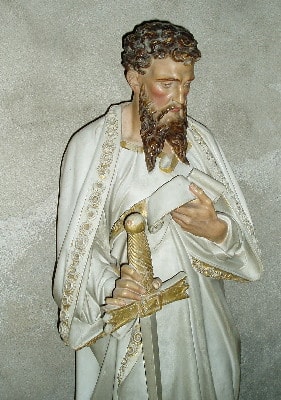 From 1951 to 1970, the "Pioneers" opened the paths under difficult conditions.
From 1951 to 1970, the "Pioneers" opened the paths under difficult conditions.
From 1971 to 1972, the first GR (Grande Randonnée path) connected Puy to Conques. In 1973, Monsieur Abbé BERNES (from Gers, died September 26, 2017) created the first "guide": "The Way of Saint James in Spain," the only one until the 1990s.
In 1982 and 1989, Pope Saint John Paul II, the first pope to pilgrimage to Compostela, made his urgent appeal to Europe to rediscover its Christian roots.
In 1987, the "Council of Europe" declared the Way of Saint James: "The First European Cultural Route."
From 1990 to 1999, local associations were created in France and all countries to assist pilgrims.
In 1998, UNESCO recognized the exceptional universal value of the Ways of Saint James in France and inscribed them on the World Heritage List as a collection of 71 edifices and 7 sections of the Puy route.
In 2000, the paths were opened throughout Europe, arranged and marked, with receptions ensured.
When July 25, Feast of Saint James, falls on a Sunday, the year is referred to as a "Holy Year": This was the case in 1999, 2004, and 2010. The next will be in 2021. The number of pilgrims then explodes in Compostela...
"Since 2009, the Bishops of France and Spain of the Way of Saint James have been striving to carry out a common task of evangelization in favor of all the agents involved in this commendable religious practice that is pilgrimage."
Bishop Marc Aillet, Bishop of Bayonne, Lescar, and Oloron, is the Coordinator for France for this Pastoral Care. On July 8 and 9, 2015, they jointly promulgated, in Saint Jean Pied de Port, the first "Pastoral Letter": "The Way of Saint James, quest and encounter." § 29 ... we, the bishops, ask this of the parishes that are stops on the Way of Compostela and other communities that welcome pilgrims: Go out on the Way to evangelize, welcome all whom you meet, invite them to visit your churches ... may the charity of your works accompany the charity of your words." § 37: "May the Apostle Saint James give you the strength to remain always faithful to Jesus Christ." On July 11 and 12, 2017, the second "Pastoral Letter" was presented in Compostela, by the highest authorities of the Cathedral, with Monseigneur Aillet: "Welcome and Hospitality on the Ways of Saint James." § 2: "Hospitality is the welcome of the traveler, § 7 of the stranger, of the one of whom nothing is known." § 15: "We make our own the words of Pope Francis ... I am a pilgrim, and I want to be among the pilgrims." § 17: "... life is ultimately a pilgrimage, and the human being is a 'viator,' a pilgrim who travels his path until he reaches the desired goal." § 18: "Let us invoke Mary, Icon of hospitality, for all the hosts and those who, in one way or another, practice the welcome of pilgrims on the paths of the sanctuary of Saint James of Compostela."P. Huchet, The Pilgrims of Compostela: a thousand years of history, Rennes, ed. Ouest-France, 2011; Collective work, The Ways of Saint James of Compostela, Vic-en-Bigorre ed. MSM, 1999
 GR®65 Via Gebennensis - Via Podiensis
GR®65 Via Gebennensis - Via Podiensis
| Return |
Former holiday hotel with a garden along the Allier, L'Etoile Guest House is located in La Bastide-Puylaurent between Lozere, Ardeche, and the Cevennes in the mountains of Southern France. At the crossroads of GR®7, GR®70 Stevenson Path, GR®72, GR®700 Regordane Way, GR®470 Allier River springs and gorges, GRP® Cevenol, Ardechoise Mountains, Margeride. Numerous loop trails for hiking and one-day biking excursions. Ideal for a relaxing and hiking getaway.
Copyright©gr-infos.com (Authorization for private use only)